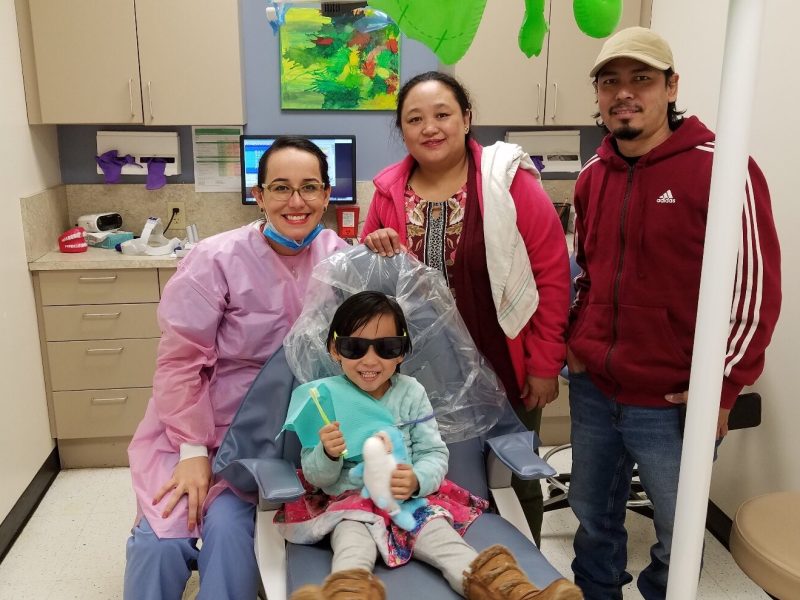City of Hope: A new mission to expand home ownership in urban neighborhoods
A well-funded not-for-profit embarks on a mission to help turn renters into homeowners and return stability to city neighborhoods.
Cities are engines of our local and national economies, and centers of creativity, culture, and entertainment. But they are under more pressure than ever. This is the latest in a monthly series, The Case for Cities, that looks at how Cincinnati and similar cities can grow by becoming places of choice, as well as models of social justice.
Sedamsville is a neighborhood that time has left behind.
It’s practically abandoned — only about 200 people live there. Half of them live in poverty, double the rate of the rest of Cincinnati. Traffic on U.S. 50 roars by its southern border, where a chemical plant, a grain storage terminal, and other industrial enterprises line the Ohio River. Its Catholic school closed in 1976; the school’s parent church shut its doors in 1989. Some streets feel empty, with houses, some built in the 19th century, vacant, windows broken, weeds growing through the roofs.
But Sedamsville has some hope today. A well-funded buyer is about to close on a purchase of 64 properties in the neighborhood, raising hopes that growth could return.
“It’s really been a beleaguered community,” says Laura Brunner. She’s the CEO of the Port of Greater Cincinnati Development Authority, known as The Port. Her agency, a not-for-profit with a public mission to spur growth in the city and surrounding county, stepped in to buy the properties, many of them simply vacant lots. They were owned by John Klosterman, a landlord whose neglect of his properties undoubtedly contributed to the community’s current condition.
The city of Cincinnati sued Klosterman in 2017, saying he ignored building code violations for years. The federal government sued him in 2018, saying he violated the Fair Housing Act by sexually harassing female tenants. He settled those lawsuits, agreeing to give up the properties he owned. The Port bought them for $1.5 million.

More than 50 of the properties are on just two streets, Delhi Avenue and Steiner, that are lined with vacant, disintegrating properties, many with broken windows, crumbling brick and damaged siding. Only two of the Klosterman houses are currently occupied, according to the property manager.
The purchase of so many properties in such a small community is a sign of hope for the neighborhood.
“We’re very excited about the fact that we can make a big difference there with such a concentration of properties and hopefully get some things moving again,” Brunner says. The Port says its options include developing new single-family homes on some of the lots it has acquired.
Herb Kohls grew up in Sedamsville, moved away, but still owns Firehouse Nursery there. “We’re pretty positive about it,” he says of The Port’s acquisition. “Sedamsville doesn’t have the resources to pick itself up.”
‘A moral imperative to fight back’
With the purchase, The Port doubled down on what has become a new mission: encouraging home ownership. It’s a mission it embarked on in January, when it closed on the purchase of 194 houses previously owned by a for-profit, Los Angeles-based investment company that went under.
“This is completely different than anything we’ve done before,” Brunner says. “We’ve always focused on vacant real estate. Our general mission has been to take vacant, blighted real estate and get it back into productive use. Here was this opportunity to buy houses that have people living in them.”
When The Port outbid 12 others investors to buy those homes from Raineth Housing, it made headlines around the country. It was unusual for a not-for-profit, quasi-governmental agency largely dedicated to restoring commercial and industrial sites to jump into the housing market in such a big way.

For Brunner, it was a way to begin to protect vulnerable residents from eviction, improve declining neighborhoods, and restore some balance to a housing dynamic skewed in favor of wealthy corporations. Long-term, the goal is to help turn renters into homeowners and return stability to neighborhoods that have suffered from population loss and disinvestment over the years.
The American Dream of owning a home has always been just that – only a dream — for many. It slipped even farther away in recent years. Home prices soared; mortgage rates doubled. It’s way more expensive to buy now, and especially if you’re already struggling to make ends meet, to save for a down payment.
That’s especially true in the city. Fewer than 40% of the homes in Cincinnati are owned by the people who live in them. The home ownership rate among Blacks is even lower.
Aggravating that already dire scenario is another trend: the rise of out-of-town, for-profit companies buying up affordable homes and turning them into rentals. Over the last ten years or so, thousands of homes in and around Cincinnati have been purchased by multimillion-dollar, out-of-town investment companies. Most of these homes were in neighborhoods already hurt by flight and disinvestment, such as Price Hill and Westwood.
But when one of these mega-landlords went under, the 194 homes it owned in Greater Cincinnati came up for grabs. Seeing an opportunity, leaders at The Port consulted with smaller not-for-profits that have worked for years to improve home ownership in Cincinnati.
“What we heard universally was there’s a moral imperative that we fight back,” Brunner says.
Wealthy corporate landlords typically have one overriding goal: to make as much money as possible. Traditionally, they’ve served commercial clients that sign long-term leases for large swaths of office or retail space, a relationship that gives the tenants some negotiating power with their landlords. But when these big companies entered the housing market, the balance of power was heavily weighted in their favor.
“Contrast that with a poor person in Price Hill, signing a month-to-month lease,” Brunner says. “They’ve got no leverage, and so they’re easily evicted. Rents are raised quickly. They don’t really have power to fight back against the landlord who’s not fixing the plumbing or the leaky roof. The balance of power is just completely off.”
Rising rents and the threat of eviction only add to the pressures that low-income tenants face, putting home ownership further out of reach.

“We end up with people in low- to moderate-income neighborhoods who have to rent because there’s no opportunity to buy a home that they can afford, and then they’re paying too much in rent and getting bad service from their landlord,” Brunner says.
After finalizing the purchase of the Raineth houses in January, the next step was to assist the tenants with getting up to date on rent. “If we hadn’t bought these homes we know that there would have been mass evictions, or at the very least rental increases for these people,” Brunner says. “But probably evictions because we didn’t know it at the time, but by the time we closed on this purchase, almost all of them were delinquent in their rent.”
Using COVID relief funds, the agency was able to help tenants get caught up. To date, it’s spent $577,000 to aid 66 tenants with rent, providing them a measure of stability and a clean start to make ends meet and begin saving money.
Now that the agency is the landlord for the homes, it’s set about getting them repaired, a job that has been much bigger than anticipated. When preparing to bid on the portfolio, Port officials were permitted to inspect only 30 of the 194 properties. After taking control of all the properties, reality set in.
“They’re in way worse shape than we thought,” Brunner says. She estimates at least $2 million will need to be spent to get the houses in decent shape.
Two vacant houses on Glenway Avenue in East Price Hill, for example, are currently undergoing renovation. The old flooring has been removed, windows replaced; walls stripped; and the front porch rebuilt on one.

“We continue to be shocked by the condition these properties,” she says. “They’re literally falling apart. If we didn’t buy them, we know that the investor that would have purchased them wasn’t going to invest in them. If this is happening across our county, what’s happening across the country? We’ve got these houses that were built in the ‘50s and ‘60s, literally falling apart. That’s only going to exacerbate the housing crisis that we have.”
The agency just contracted with a local property management company, Gateway Home Services, that Brunner says shares the belief in being responsive to tenants. “When somebody calls and says their plumbing is broken we’re actually going to fix it in 24 hours,” she says. “We’re going to be responsive to the very basic things that a landlord should be taking care of.”
The long-term goal — home ownership
The next, longer-term phase of The Port’s plan is now under way – assisting the tenants to become homeowners. Its first renter-turned-homeowner is expected to close on a home purchase soon.
“We’re hoping either by the end of the year, or in early January, we’ll have our first home sale,” Brunner says.
Another 10 are working to make it happen, taking classes to learn how to save money and get an idea of what’s involved in the maintenance of owning a home. The Port has partnered with Working in Neighborhoods, an agency that has worked for years to improve home ownership rates in inner-city neighborhoods, to help educate those tenants that are interested in moving toward the American Dream of home ownership.
“The goal is to get the tenants who are currently in living in those homes able to purchase those homes if they want to,” says Sister Barbara Busch, executive director of Working in Neighborhoods. “That is the single best way to help a family become stable and to help a neighborhood be stable.”

Sister Barbara and Working in Neighborhoods have been encouraging home ownership in some of Cincinnati’s poorest neighborhoods for more than 40 years. It runs financial education programs, a utilities program for low-income residents, and has also bought and rehabbed more than 160 homes for low-income buyers over the years. With an annual budget of only about $1 million, its impact has been substantial. But the entry of The Port into the business of fostering and sustaining home ownership changes the game. The agency is funded in part by city and county governments, owns $140 million worth of assets, and has the ability to raise millions by issuing bonds.
“Many of us have been encouraging them to consider it,” Sister Barbara says. “We knew it needed to be done, but most of our organizations aren’t large enough and don’t have the financial means they have.”
Under Brunner, The Port will continue to use its financial might to help stabilize neighborhoods and expand home ownership. It’s in discussions with the not-for-profit Cincinnati Development Fund, the stewards of the affordable housing trust fund, and with national foundations and financial institutions to identify sources of funding.
“Our goal is to raise more money so that we can continue this activity,” Brunner says.
You can read earlier articles in The Case for Cities series here.
You can view and listen to The Case for Cities conversation series here.
The Case for Cities: Cities of Choice are Cities of Justice series is a partnership between UC School of Planning and Soapbox Cincinnati, made possible with support from The Carol Ann and Ralph V. Haile, Jr. Foundation.





















